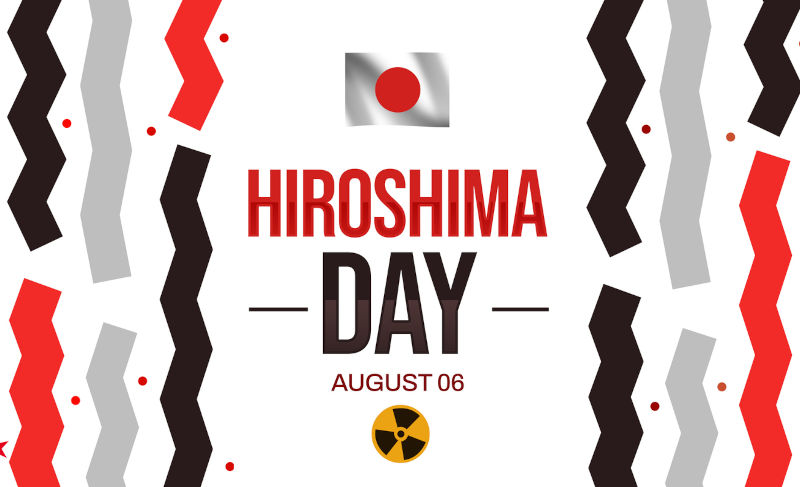Hiroshima remembered: When will we ever learn?
August 12, 2023
To be here in Hiroshima, invited to perform at one of numerous peace concerts commemorating the destruction of the dropping on this city of the first atomic bomb, 6th August 1945, is somewhat special, though of course tinged with sadness that humanity could descend to such barbarism.
A bright clear day 78 years ago, 8.15am, as people were on their way to work and school, a sudden flash of unprecedented magnitude, equivalent of 15,000 tons of T.N.T., instantly took the lives of some 100,000 people, those perhaps being the lucky ones, while many others were left to slowly die of horrendous wounds, or by the even slower torture of radiation poisoning. Excluded from the early estimates of the dead was the collateral damage of some 30,000 Korean slave labourers.
Called Little Boy, one could almost think of reference to the little child Jesus, only rather than bringing salvation, this uranium charged little boy brought the apocalypse. The bomb was meant not only to show the Japanese military the folly of fighting on, something which initially failed as with great martial spirit they pledged to continue the fight, but more importantly to warn the Soviets of this new mighty weapon the U.S. now contained in its arsenal, one which they assumed the Soviets would not be able to match. Just 4 years later, they too, like Prometheus, would steal this terrible fire from the gods.
The Soviets after all had seen an opportunity for easy conquest, perhaps revenge for their humiliation by the hands of the Japanese 40 years prior, and were threatening to declare war on Japan, actually doing so just one day after the dropping of the bomb. The demonstration of such a weapon would it was thought surely put a stop to any expansionist ideas they had.
Hiroshima was the ideal locale to show the effectiveness of the new weapon. The geography of the city, and it essentially being intact due to an absence of previous large scale bombing, as it was judged not to be an important military target, meant that a bomb exploded at altitude would have devastating effect, an effect which would also be measurable. Indeed in their eagerness to measure its effectiveness the U.S. Air Force sent reconnaissance planes over the city just hours later. They were however, unable to ascertain the damage as the smoke and fire were still too thick. It was not until several days later that the U.S.A.F were able to take photos of the once city, make estimates regarding the number of deaths, and analysis concerning the terrible effectiveness of their new weapon.
A few weeks later, the first journalist to Hiroshima, the Australian, Wilfred Burchett, clearly shocked by what he saw, described Hiroshima, as though a monster steam roller had passed over it and squashed it out of existence while also describing the mysterious deaths which were still occurring mysteriously and horriblyfrom an unknown something which I can only describe as the atomic plague.
Despite the already known terrible aftermath, the bloodlust of the militarists was not satisfied and a second bomb, this time using plutonium, again cutely called fat man, was dropped on Nagasaki, 9th August 1945. Of a different type, with a different terrain, measurements would again be made, and the warning to both the remains of the Japanese military, and the Soviets, could be amplified.
Nagasaki originally had not been the second choice bombing site, that nominated being Kokura (present day Kitakyushu). Poor weather conditions, what luck, precluded the dropping of the bomb, leaving Nagasaki, ironically the major Christian centre in Japan, to suffer the effects of an even larger bomb.
Less than a decade prior, in 1937, the artist Pablo Picasso, shocked that anyone, even with the moral debauchery of Nazi Germany, had that same year bombed a civilian target, had painted on a giant canvas his Guernica, as protest against such barbarism
How rapid was the moral collapse into depravity; London, Liverpool, Hamburg, Dresden and Tokyo soon following. Then Hiroshima and Nagasaki. A scale of destruction of such magnitude that not even Picasso, no matter how large his canvas, could ever hope to capture.
It has been argued that such ending is perhaps appropriate for a militarist Japanese state whose pernicious cruelty others, through Asia, particularly in China and Korea, knew only too well. Yet, surely to mete out such horrendous evil, upon evil, only serves to further deepen and intensify that evil.
As we again remember Hiroshima, what have we learned? Have we determined to turn away from war, including the worst type involving nuclear weaponry?
Sitting reflecting in Hiroshima, sadly I know, that despite all the never again speeches I am hearing, we are instead actively planning or the reoccurrence of such. My land Australia, is becoming ever more heavily militarised, a forward base, in an endeavour to encircle and constrain China, which has dared challenge the U.S. led rules (we make the rules) based order. Sadly Japan, the land in which I am currently, has also actively joined that crusade. The danger of nuclear conflagration is glibly dismissed, indeed is threatened!
When will we ever learn raised by ? When will we ever learn?

